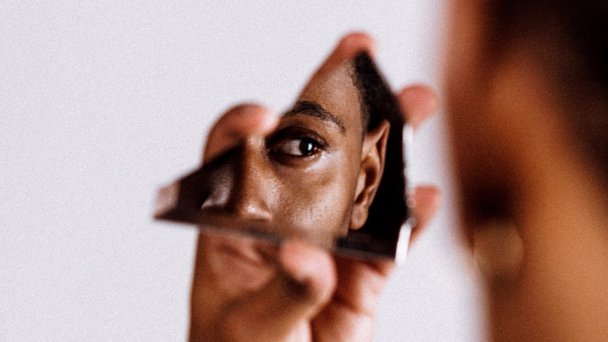Okay, Seriously… What is Chastity?
Quick, what is chastity?
Take a moment to legitimately think about what’s the first thing that comes to mind when you hear the word chastity.
Is it something beautiful? Ugly? Repressive? Outdated? Sacrificial?
A friend of mine once asked a group of 7th graders what chastity was. A deafening silence fell across the room as the question just lingered there. Thinking that some of the students may be embarrassed to speak up, she assured them that there were no wrong answers. One girl meekly raised her hand and innocently asked,
“Isn’t that a girl’s name?”
While Chastity can certainly be a lovely name for a young lady, it’s also something more than that. There are typically three kinds of people in the world when it comes to how we think about chastity. There’s those who don’t know what chastity is, those who are confused about it, and those who have a misunderstanding of it.
Chances are we’ve all fallen into one of these categories at one point or another. It can be hard to really place our finger on what exactly chastity is. There’s hundreds of explanations and definitions out there and none of them are especially clear or concise.
So maybe you find yourself confused at how to explain chastity to a friend. Maybe you’ve never heard the word before. Maybe you’ve heard it explained in a pretty negative light and so you have the same reaction to it as one 11th grade boy I asked what chastity was:
“Something for losers.”
Popular culture will often depict anyone living a chaste lifestyle as someone who’s naïve, inexperienced, dorky, or otherwise out of touch with the world around them. They portray chastity as a big repression of sexual desire for unrealistic fear of the “dangers of sex”. Misunderstood in this light, it’s easy to laugh at something as absurd as that.
But chastity is something far more beautiful and meaningful than blind sexual repression. It’s something that allows for what every man and woman longs for – real, authentic love.
So let’s finally break it down. Seriously – what is chastity?
Let’s start at a practical level.
The virtue of chastity is linked to the cardinal virtue of moderation. Moderation is the virtue that allows us to live reasonably. It subordinates the sensual reactions to reason.
So quick example. Dogs and other animals run completely off of instinct. If you put a huge steak in front of a dog, that dog is going to devour it all right there until he’s sick. If you ask “Why did that dog just eat that whole steak?” The obvious answer would be that he’s just a dog, he can’t help himself, his instincts told him to.
Now, if you had a huge steak in front of you and you devoured it all until you got sick, people may ask, “Why did you do that?” It’d be pretty hard to give the same “I couldn’t help myself” excuse like the dog. As human beings we have an intellect and a will. We are reasonable beings that have the ability to choose the good, so it only makes sense to act like it. Without moderation, nothing would be stopping us from giving into every impulse like wild animals. Moderation reminds us of our dignity and frees us to choose the good. Without it we could become a slave to our desires.
So chastity stems from moderation. On a practical level chastity is, as you may have guessed, a matter of controlling sexual impulses. That’s not the same thing as repression though. Repression is saying “This is bad, don’t feel that, shove it over there and leave it be.” Moderation is saying “This is good, but I see that it has a proper context and purpose. I’m going to control this impulse for the sake of a greater good.”
When we see the purpose of our sexuality in it’s correct light, as something that leads us outside of ourselves to make a total gift of self to another person, then it only makes sense to reject anything that stands against that.
But is that all that can be said about chastity? Just control your sensual impulses and you’ll be chaste? The beauty of chastity actually lies in the way it protects and fosters love.
Karol Wojtyla, in his book Love & Responsibility, writes that chastity “can only be thought of in association with the virtue of love.” Meaning that chastity and love are intimately connected. How so?
Chastity’s purpose is to free love from an attitude of use. If we aren’t careful, sometimes we can lie to ourselves about love. We can get so caught up in the good feelings, how attractive someone is, or how much we enjoy being around them that we confuse the good feelings we get with love itself. Often inadvertently, we end up using the other person for the emotions they give us rather than actually loving them.
Chastity stands right between love and use and shields love from that which would hurt it. Wojtyla goes on to write that “the essence of chastity consists in the quickness to affirm the value of the person in every situation.”
A person is someone who deserves to be loved and not used. Chastity is the habit of affirming that the other person is good. It is the habit of seeing the person. It does away with any hidden intentions. The chaste couple is free to look into each other’s eyes confident that the other isn’t trying to take something from them. In that space, true love based on the well-being of another can blossom.
So next time somebody asks you what chastity is, tell them it is the guardian of love. When they tell you that chastity is so repressive, tell them that it actually frees us to love. And finally, keep striving to live this heroic virtue, because it will speak louder than any definition.“Chastity is a difficult, long term matter; one must wait patiently for it to bear fruit, for the happiness of loving kindness which it must bring. But at the same time, chastity is the sure way to happiness.” ~ Karol Wojtyla


